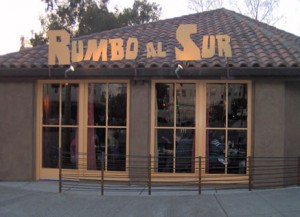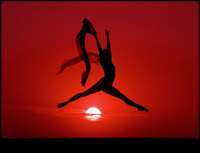Below is a growing list of dance companies / schools / organizations / individuals who need our help:
1. Skyline High School Dance Dept. (Oakland, CA): One of the nation’s most diverse high schools, Skyline High School is a comprehensive public high school in Oakland, California. Skyline’s Performing Arts Department provides a performing arts education in drama, dance, instrumental music, vocal music, and technical theatre. A typical school-year season includes 12 large-scale productions, frequent off-campus performances, and multiple opportunities to compete. Performances are held in the 975-seat Farnsworth Theater.
Dance Dept. immediate needs: $1,500.
(For continuing dance scholarships, new rehearsal studio equipment (mirrors and barres.))
2. Eglevsky Ballet Co., (Long Island, NY): The Eglevsky Ballet Company is dedicated to enriching Long Island and its surrounding communities through the presentation and training of ballet in the classical tradition of its founder, Andre Eglevsky.
The Eglevsky Ballet has a rich 50 year history and has established itself as an entity dedicated to upholding the high standards in ballet today. It remains the only professional ballet company on Long Island.
Summer Intensive 2012 (July 2 – 27, 2012).
Immediate needs: $400. to fund instructors expenses.
www.eglevskyballet.com
3. Kathy Mata Ballet, (San Francisco, CA): Founded in 1988, Kathy Mata Ballet is one of the only dance companies in the country to provide talented adult dancers from non-dance professions with the opportunity to train and perform. The company dancers come from a variety of professions including architecture, law, engineering, accountancy, banking and scientific research. All dancers take class and rehearse at least 4 times a week, on top of their professional working day.
Kathy Mata Ballet performs through out the community for various groups including benefits, senior citizen homes and retirement centers. In addition they perform in such venues as the Herbst Theatre, the Cowell Theatre at Fort Mason and the Alonzo King Lines Dance Center.
Immediate needs: $500. for costumes and new sets.
www.kathymataballet.com
5. Adult Beginner Ballet Documentary (Kathy Mata, Ballet Instructor, Alonzo King Lines Dance Center, San Francisco, CA): ‘Adult Beginner Ballet’ is a short documentary by San Francisco filmmaker Michelle Ortega of North Beach Digital, about adults of various ages, shapes and sizes who take a beginning ballet class at the renowned Alonzo King LINES Dance Center in San Francisco. The film features Kathy Mata, a 60 year-old dedicated instructor, who is determined to teach her students (ranging in ages from 16-80) the beautiful and technically challenging art of ballet. The National Educational Telecommunications Association, a non-profit organization, has agreed to distribute 'Adult Beginner Ballet' nationwide to PBS stations. However, there are production costs necessary for airing it nationwide. Immediate Needs: $12,110. www.northbeachdigital.com/ABB.html
6. Dance Visions NY – Great Neck, NY: Dance Visions NY, a not-for-profit organization, helps enable audiences to experience an emotional, spiritual and intellectual connection to the world of dance. We aim to build and educate local dance audiences. Our original works transform the vision of the modern dance pioneers into a current aesthetic. We also preserve and present the original repertory and art form of Isadora Duncan.
Our culture’s vast dance history has given rise to works of founder Beth Jucovy and other dancer/members of the group. The company's unique works communicate our shared humanity at all stages of life, and the works elicit visceral emotional responses and connections. Dance Visions NY exposes people to the joy, scope, and richness of dance as a vital and living art, and also presents the art's rich history and legacy.
Activities of the company include both performances and workshops at venues including museums, outdoor festivals, schools, universities, theaters, community centers, libraries, and parks. Dance Visions NY performs on Long Island, the NY metropolitan area and beyond. The company collaborates with other artists including actors, live musicians, composers, visual artists and media technicians. Immediate Needs: $2500. to help fund development of Future/Past/Present, a multi-generational dance project. www.dancevisionsny.org
7. Behold Dance Collective, Oakley, CA: “We dance to honor the joys and challenges of life.” Behold Dance Collective, is a non-profit organization dedicated to producing dance art that inspires individuals and unifies communities. The Artistic Director, Mindi Adair Wade, teaches a dance school for children and directs 2 dance companies, one providing performing opportunities for children and one for adults. Immediate Needs: $1,500. for scholarships, administrative costs and new set designs. www.beholddance.org

